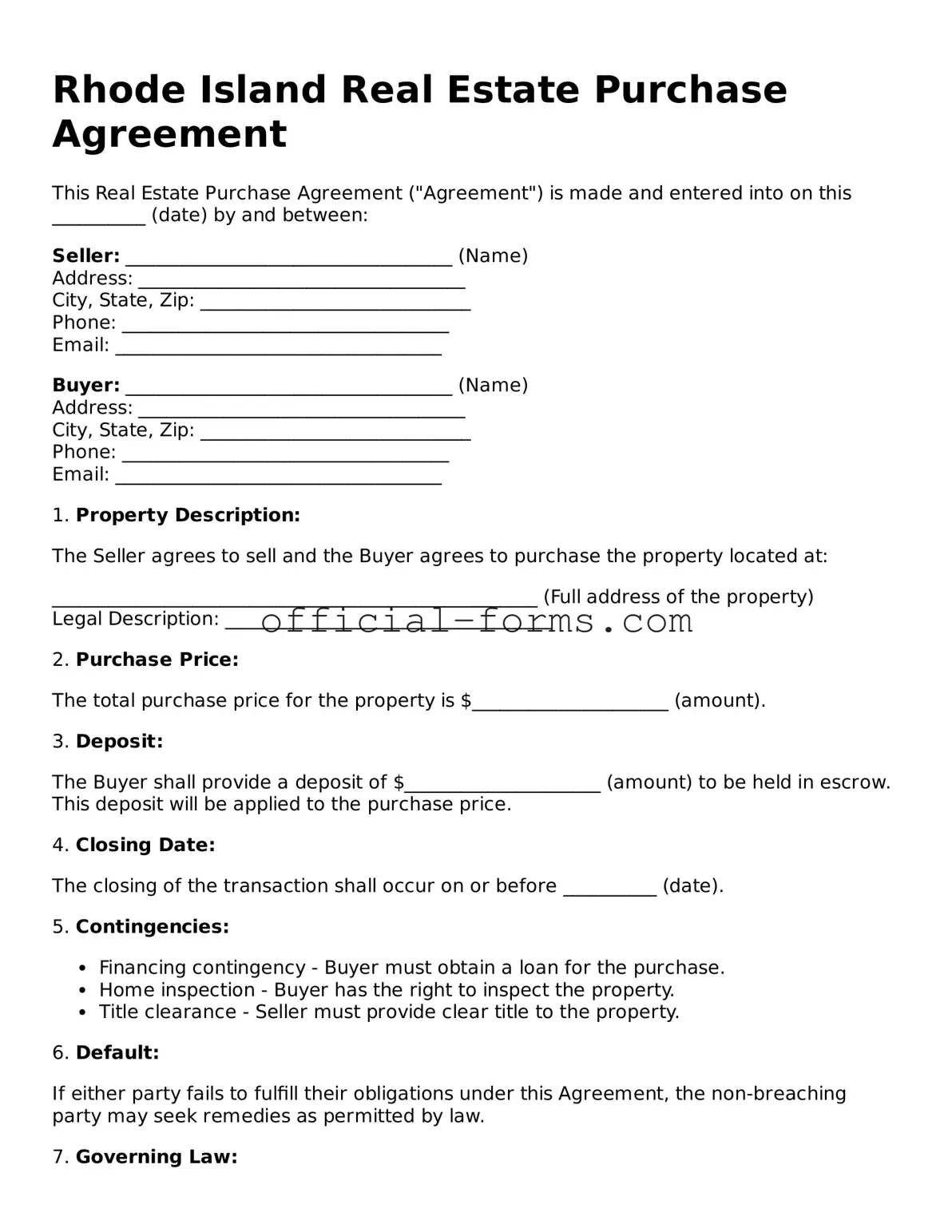When individuals engage in the process of purchasing real estate in Rhode Island, they often encounter the Real Estate Purchase Agreement form. This document serves as a crucial foundation for the transaction, yet many buyers and sellers make common mistakes that can lead to complications. Understanding these pitfalls can streamline the process and ensure a smoother transaction.
One frequent error involves incomplete information. Buyers and sellers may neglect to fill out all required fields, leaving critical sections blank. This oversight can create confusion and delay the transaction, as parties may need to revisit the agreement to clarify or add missing details. It is essential to provide thorough and accurate information, including names, addresses, and property details, to avoid unnecessary complications.
Another common mistake is the failure to specify contingencies. Contingencies are conditions that must be met for the agreement to proceed. Without clearly outlining these terms—such as financing approval, home inspections, or repairs—parties may find themselves in precarious situations. If a buyer, for instance, fails to include a financing contingency, they risk losing their earnest money deposit if they cannot secure a loan.
Additionally, many individuals overlook the importance of dates and deadlines. Timelines for inspections, financing, and closing are critical components of the agreement. When these dates are not explicitly stated or are inaccurately recorded, it can lead to misunderstandings and potential legal disputes. Parties must ensure that they agree on and clearly articulate all relevant deadlines to maintain a smooth transaction flow.
Finally, a significant mistake occurs when individuals neglect to seek legal advice. While the Real Estate Purchase Agreement form is designed to be user-friendly, the complexities of real estate transactions can be daunting. Failing to consult with a qualified attorney may result in overlooking important legal implications or nuances within the agreement. Engaging legal counsel can provide valuable insights and help mitigate risks associated with the transaction.
